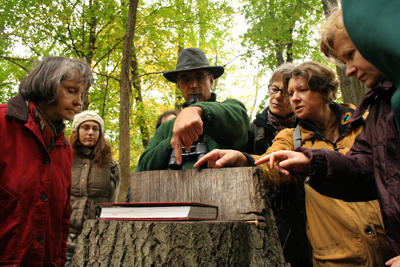Back then it was a computer science student on an exchange from China taking his one mandatory biology credit and a lady who had inherited 100 acres of forest in need of intense management. I spent hours over coffee, talking trees and later learned they both changed career paths becoming involved in local forestry and environmental issues.
I still sometimes worry there won’t be anything new but the faces. We’ll go over the same old stuff with no one particularly interested. But I’m happily surprised each time the questions start to flow and discussions head off in unexpected directions. The last time around it was a lengthy conversation on invasive species and the reasons we need to be concerned about them.
When the course starts later this month I’ll be looking at tree biology. As a starting point I might use photos of a particular tree that I found on a tour along the Humber Valley. A stump was all that remained from what was once a fairly mature oak tree. This was October 2011 and we were retracing Hurricane Hazel. As we looked at the visible growth rings, we could read the environmental conditions of the past recorded in the wood.

We all thought the tree was long dead. It had, after all, been cut down! But we were wrong!! Just today I received an email from Amanda Gomm telling me that the stump has developed two new growing sprouts. I haven’t gone to see them just yet, but our hope is that what was left of a 200 year old tree may actually continue to grow to for another two centuries!
It will be interesting to visit the stump again and determine how it has managed to survive. What has happened? How well will it perform in spite of everything? Interesting stuff.
Over all I am looking forward to another opportunity to spread the good word about trees and their environment. To meet and talk with interested and appreciative tree folk. One-on-one or with a class full, indoors or out, I learn something new each time I get up to share what I know. How they grow can be surprising. And while there are constants, what makes them important is unique to us all.
Gaspar Horvath, Project Coordinator with the Black Creek Conservation Project, has taught Forestry at the University of Guelph and also has extensive experience leading environmental stewardship programs for schools and community groups. He has been an instructor with LEAF’s Tree Tenders Volunteer Training Program in tree identification, soils and stresses and will return again this September to lead the tree identification and tree biology sessions.
